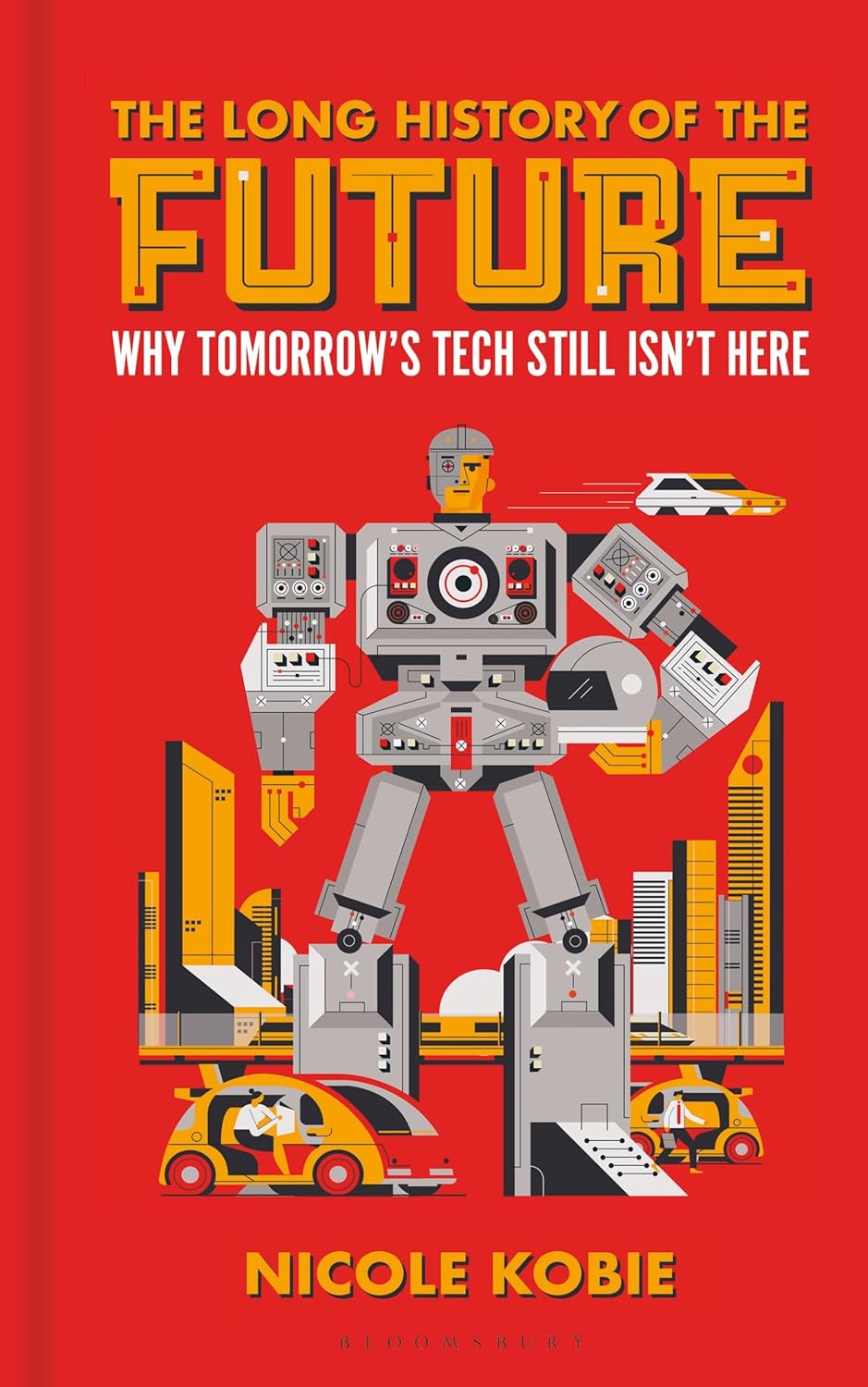This lunchtime I attended this event with author and journalist Nicole Kobie (@njkobie) on Will we ever get flying cars? Rethinking the future, hosted by Nesta as part of its Future Signals event series, chaired by William Woodward.
Kobie is author of The Long History of the Future: Why tomorrow’s technology still isn’t here (Bloomsbury Sigma, September 24, 2024)

I was struck by her comment that “technology is moving really fast now”. I asked her: ‘Compared to when? How do you measure this?’
In an interesting answer, Kobie understandably focused on the rate of change in ICT and particularly AI. I clarified that I was asking about “technology moving really fast” in a secular and widespread sense.
As such, I was comparing to the late nineteenth century, when we developed the chemical and dye industries; automobiles and steamships; electrification and expansion of transport and industry, and mass production; electric lighting for the home and public space; telegraphy and telephony; automation in printing; steel-based construction and mass urbanisation; mechanisation of farming, fertilisers, and refrigeration for food transport and storage; photography and motion pictures; pharmaceuticals, germ theory, and new kinds of medicines; and better public health with clean water infrastructure and sanitation.
And that excludes developments in war-fighting and defence. Or in management and workplace organisation (other than the production line).
And to the post-War period, when we developed radar, jet-powered-aircraft and -travel; rocketry, satellite systems, manned spaceflight, and space exploration; nuclear power for energy generation; antibiotics and innovations in surgery and medicine; X-ray, MRI and CT scanning, and medical devices; visual displays including the CRT and LEDs; consumer electronics, mass recorded music, and television broadcasting; the highway system and widespread use of automobiles; prefabricated construction; new materials, including plastics and manmade fabrics; GMOs and high-yield crops; payment systems such as credit cards; the transistor, computing, integrated circuits and software; computer-control in industry; and telecommunications and the Internet.
Again, that excludes developments in war-fighting and defence. Or in management and workplace organisation.
Today, “technology is only moving fast” in a few of these and other areas. And even in ICT, we are building on decades of R&D, much of it part of the post-War legacy, not least in the area of artificial intelligence, which was spurred on by Alan Turing in the 1940s.
This idea that “technology is moving really fast now” has been abroad since we recovered from the Dotcom Crash. But it is a skewed perception. Partly as we have a limited view of what constitutes ‘technology’, or the history of technology and innovation.
Also as commentators tend to focus on the ‘impact of technology’ on their lives and work and not its broader socio-technical effects: how people use it to improve their lives, and how industry uses it to improve productivity and develop new products and services. That is: Innovation.
In particular, media commentators fetishise ICT as it has transformed their very industry, enabling us to move from hot metal typesetting up to the ’70s to photosetting on lithographic printing (including in colour) in the ’80s, to computer-based page makeup in the ’90s, and Web-based publishing from the late ’90s. These commentators are often unable to see beyond their own (disconcerting) professional experience and to understand the Progress over time that we have developed – and adapted – technologies to effect.
We need to return to using ‘macroscopes’ to understand socio-technical change.
See a shorter version of this post on LinkedIn

